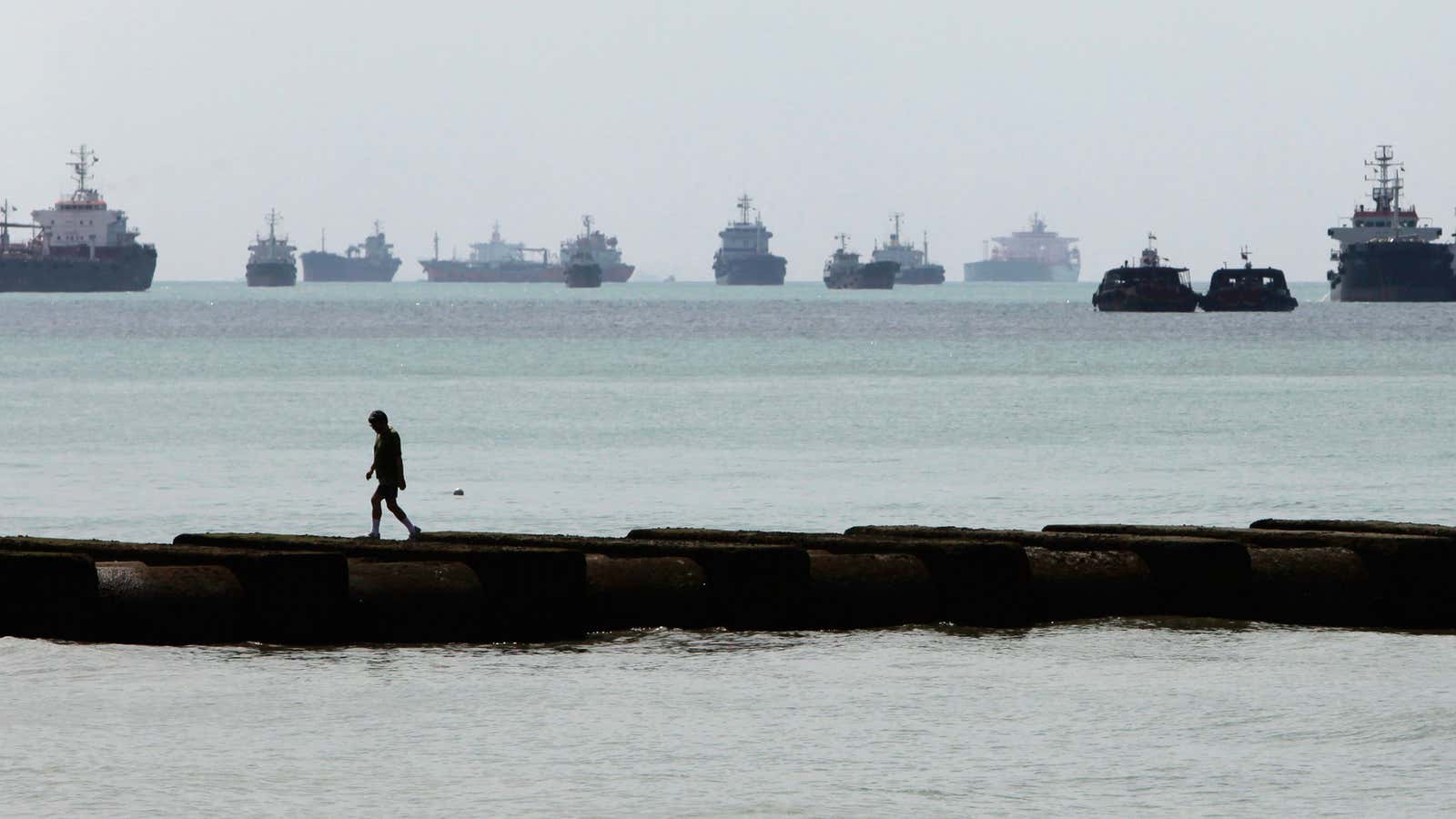Holiday shoppers are paying more for gifts this year, and retailers are blaming the price hikes on the rising cost of shipping. Stores have to raise prices and curtail holiday discounts, executives argue, because they’ve had to spend so much more on freight just to get their products in stock.
But rising freight costs can only explain a fraction of the holiday price hikes. Much of the blame can be pinned on shortages: Retailers’ inventories are running low, and shoppers are spending more on all sorts of goods. When more buyers are chasing scarce goods, sellers have more power to raise prices—and they are, sending prices far higher than the rising costs of freight.
The rising prices of everyday items
To illustrate the rising cost of freight, analysts at the freight booking platform Freightos estimated the cost to import four products—a cast iron skillet, an air fryer, a weighted blanket, and a 49-inch LED TV—in 2019 and 2021. They also recorded the average prices consumers had to pay for each item in both years. Unsurprisingly, freight costs and prices were up across the board.
The analysts found that freight played a role in rising costs. This year, freight accounts for a bigger chunk of a product’s final price tag than it did before the pandemic.
But changes in freight costs couldn’t explain most of the price increases the analysts observed. Even for the most freight-sensitive item, weighted blankets, rising shipping costs could only account for about a third of the overall price increase. Weighted blanket prices are particularly sensitive to freight costs because the products are heavy—meaning that any additional per-pound charge will be greatly multiplied—and they’re inexpensive, meaning that small changes in freight costs will seem larger compared to the product’s final price.
High demand and scarce goods raise prices
Retailers are contending with plenty of rising costs: shipping, labor, raw materials. But one of their main challenges is scarcity. Chaos in global supply chains has made shipping very slow and inefficient, limiting the retail sector’s overall capacity to restock inventories ahead of the holidays. Customers, however, are shopping as ravenously as ever. That gives retailers the power to raise prices—regardless of how much their underlying costs are increasing.
There’s nothing inherently nefarious about that. As Northwestern University economist Ian Savage points out, this is how markets are designed to work in times of scarcity: “When demand exceeds some constrained supply, then the market has to ration,” he wrote in an email. “It could ration on a ‘first come, first served’ basis, but typically in capitalist economies we ration by price.”
In fact, rationing-by-price is responsible for the lion’s share of the rising cost of freight, too. It has gotten slightly more expensive to sail a cargo ship during the pandemic; but for the most part, freight costs are rising simply because there are a lot of retailers looking for space on cargo ships, which means shipping lines have a lot of power to raise prices. Hapag-Lloyd, the world’s fifth largest shipping line, is now spending about $100 more per container to ship cargo than it did before the pandemic. But in the meantime, it has raised the price it charges its customers by $700.
